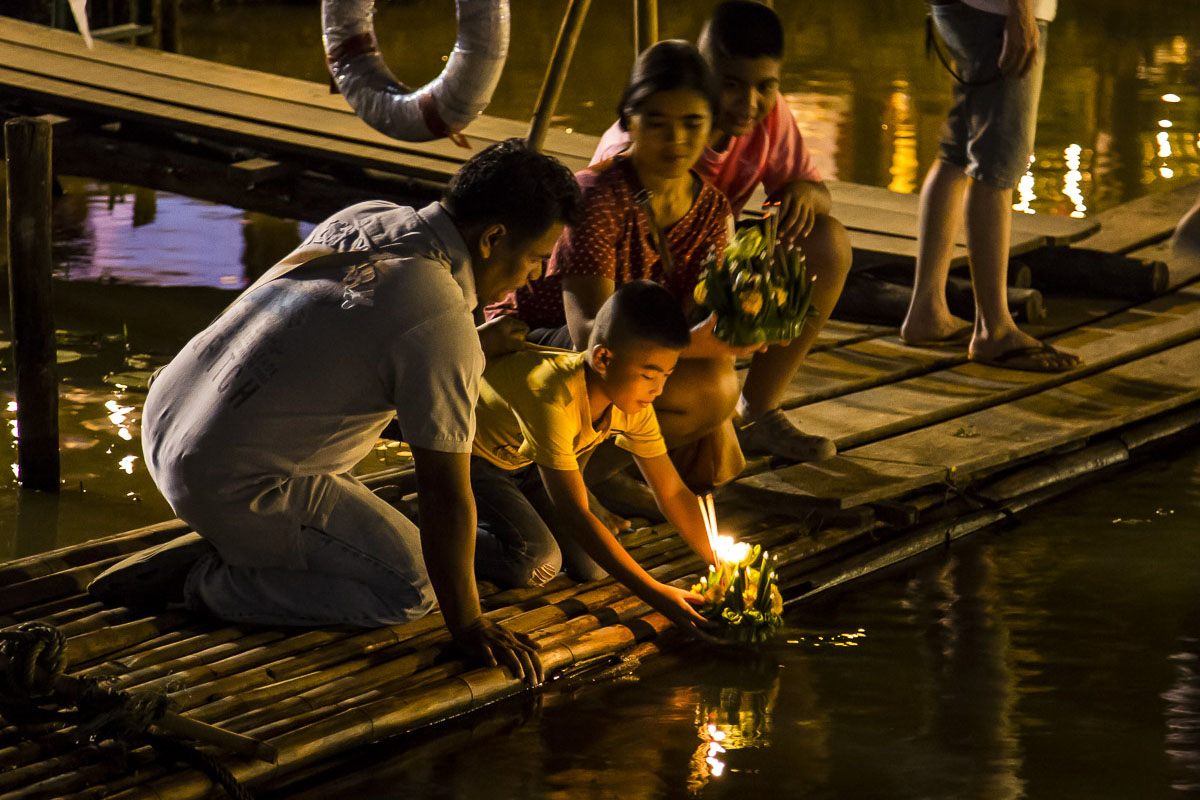Loi Krathong: Candles in the wind

Loi Krathong, one of the most charming of all Thai festivals, takes place on the evening of the full moon of the 12th month in the Thai lunar calendar. This year that happens to be November 13.
A krathong is a little basket made out of intricately folded banana leaves with a base of bread. Into the krathong is placed a candle, three incense sticks, a small fish curry dish called a hor mok or a Thai dessert and a one baht coin. Loi means float and should you be passing a body of water on this night you will find children and adults alike casting off their krathong from piers, river banks, beaches, lakes and ponds making a wish as they do so.
The origin of the festival is unclear. One popular tale holds that it began in the 13th century. A beautiful lady named Nang Nopphamat at the court of Sukhothai placed a candle in a boat of lotus leaves and floated it down-river in order to attract the attention of King Ram Khamhaeng.
King Mongkut (Rama IV) wrote, in 1863, that it had originally been a Brahman festival adapted by Thais to honour the Buddha. The candle venerates the Buddha with light, while the krathong floating away symbolises letting go of all one’s hate, anger, and other transgressions. The krathong can also be used as an offering to thank Phra Mae Khongkha, the Thai name for Ganga, the Hindu Goddess of Water.
Nang Nopphamat’s story is a work of fiction but amidst the illuminated ruins at the Sukhothai Historical Park is a particularly lovely spot for krathong watching.
Yee Peng
Another great location is Chiang Mai where Loi Krathong coincides with Yee Peng which is the 2nd full moon of the ancient Lanna calendar. Here khom loi or sky lanterns are released to be carried away on the breeze. The lanterns are made from a thin fabric or rice paper stretched over a bamboo frame with a candle inside. When the candle is lit the hot air lifts the lantern. The khom loi are a comparatively recent phenomenon and are subject to increasing government restrictions due to the threat posed to passing aircraft.
Photo by John Shedrick via Wikimedia Commons